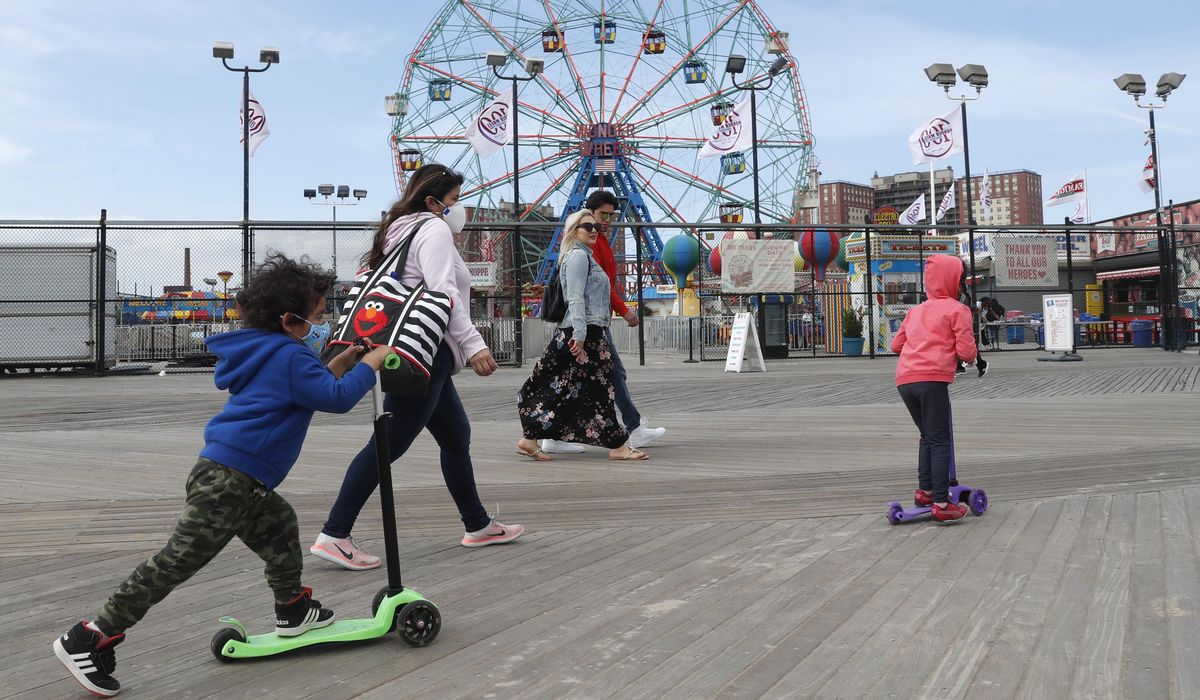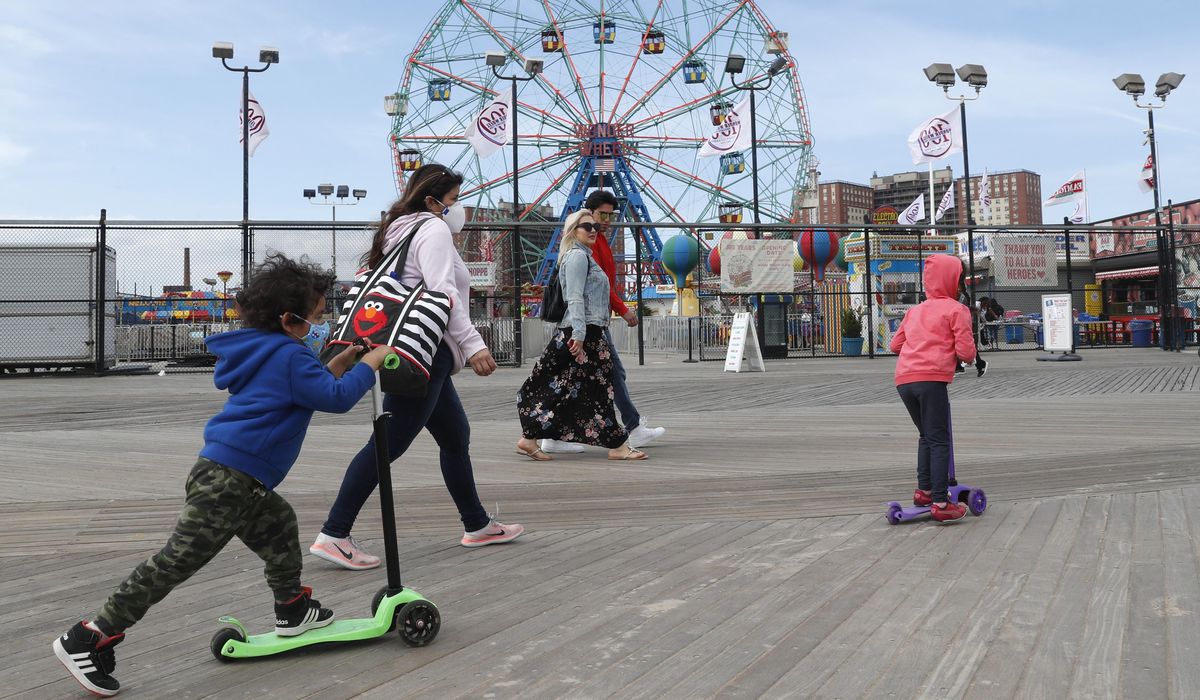
The federal government says scooters are the most dangerous toys this holiday season, but the toy industry says not all scooters are created equal.
The Toy Association, a nonprofit trade group, says the U.S. Consumer Product Safety Commission‘s annual “Toy-Related Deaths and Injuries” report mistakenly includes scooters not regulated as toys in its claim that 41,700 injuries were treated in emergency rooms last year because of “non-motorized scooters.”
“Given the narrow scope of scooters that are considered ‘toys,’ it is our understanding that most incidents cited in the scooter data do not involve the type of products covered in the toy safety standards,” said Alan P. Kaufman, senior vice president of technical affairs for the Toy Association.
Mr. Kaufman, who specializes in toy safety standards for the industry, says the federal government recognizes as “toys” only a small number of scooters with three or more wheels that it recommends for children younger than 5.
No other scooters count as “toys” under the U.S. toy safety standard — especially not the electric-powered scooters that teenagers and young adults often use as alternative transportation.
“I think a lot of products colloquially get referred to as ‘toys’ when they’re really outside the scope of how toys are regulated,” Mr. Kaufman said.
The mandatory toy safety standard, known in federal regulations as ASTM F963, has been in force since the 1970s and includes requirements for the limited range of scooters recommended for preschool-age children.
Among the most restrictive in the world, the toy standard contains more than 100 consumer safety tests for mechanical, chemical, electrical and flammability hazards.
But the safety commission regulates the labeling and instructional materials of most scooters as transportation — not toys — under two additional standards: ASTM F2641 covers powered scooters for riders 8 and older, and ASTM F2264 covers nonpowered scooters for riders 5 and older.
Nikki Fleming, a spokesperson for the Consumer Product Safety Commission, emphasized the danger of scooters but would not say what models and brands the toy-related injuries data covered.
“If you are choosing a non-motorized scooter or any other riding toy such as a bicycle or skateboard as a holiday gift, get safety gear, including helmets, for scooters and other riding toys — and make sure that children use them every time,” Ms. Fleming said.
In a Nov. 18 press release on holiday toy safety, the commission reported that scooters accounted for the highest percentage of toy-related injuries in 2020.
“Non-motorized scooters account for 21 percent of all toy-related, emergency department-treated injuries,” the commission said in the release, referring to 41,700 out of a total 198,000 injuries last year.
The 41,700 injuries represented a 17% increase from 35,600 scooter injuries during the previous year, continuing a trend, the commission noted.
These numbers come from the September “Toy-Related Deaths and Injuries” report, which listed “toy balls” as the second most dangerous toy, with 15,300 injuries treated in emergency rooms last year.
Only 5,300 of the 41,700 nonpowered scooter injuries in 2020 involved children 4 and younger, the report said. The remainder consisted of 28,900 injuries to children ages 5 to 12, 2,300 injuries of children ages 13 and 14, and 5,200 injuries of those 15 and older.
That means 87% of the “toy-related injuries” could not have come from small children playing with scooters regulated by the federal toy standards, but the safety commission‘s annual report does not break down the injuries by type of scooter.
“If they say toy injuries are going up because of scooters, then that’s where we have a problem,” said Mr. Kaufman, the industry safety standards expert.
He said the government’s toy-related injury estimates come from emergency departments coding any injury “related to” but not necessarily caused by scooters.
“For example, if a kid leaves a toy on the stairs and trips over it, that’s a toy-related injury in the CPSC data,” Mr. Kaufman said.
Part of the confusion over what counts as a “toy scooter” arises from the growing variety of electric-powered and nonpowered scooters.
Companies now make scooters for every age group, ranging from three-wheeled preschool toys to nonpowered and e-scooters for older children and adults.
Projected to surpass $33.5 billion in market value by 2030, e-scooters have become popular among urban teenagers and young adults, who see them as more eco-friendly than cars and more maneuverable than bicycles.
A spokesperson for Bird, which operates shared e-scooters in more than 350 cities around the world, provided links to company policies making it clear that its hefty scooters are recommended only for ages 18 and up.
Radio Flyer and Razor have marketed nonpowered scooters and less-powerful e-scooters as transportation for teenagers and young adults, creating a growing market for more basic models among children of all ages.
According to an August report from toy industry market researcher The NPD Group, “outdoor and sports toys” — which include skates, skateboards and scooters — sold better than any other category of toy, with $2.9 billion in revenue during the first half of this year.
Reached by telephone Monday, a Razor spokesman did not wish to comment on the possibility that some of its scooters for children might be included in the toy-related injuries report. Radio Flyer did not respond to an email and telephone call seeking comment.
Some toy safety watchdogs have warned about the popularity of children’s scooters.
The nonprofit World Against Toys Causing Harm Inc. warned toy shoppers in a Nov. 17 press release “to beware of certain wheeled riding toys with the potential for head or other impact injuries.”
“One wheeled toy, traditional non-motorized scooters, for another year in a row was associated with the most toy-related injuries,” said the statement, referring to the safety commission‘s report.
Mr. Kaufman, the toy industry safety expert, said the number of toy-related injuries will drop when the government modernizes its reporting system to clarify that most of the scooters marketed to children are transportation rather than playthings.
“I’m not critical of CPSC‘s information. It’s the best system in the world,” he said. “But like any data collection exercise, I think it’s subject to some errors along the way.”








